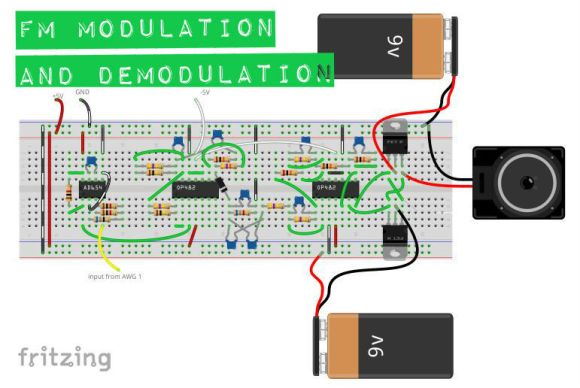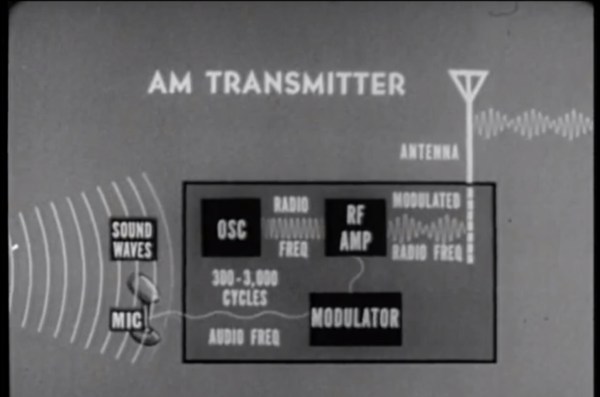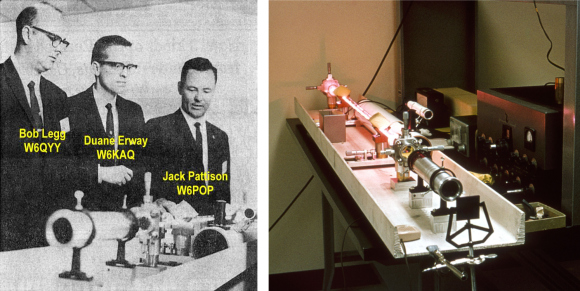
[brmarcum] takes us back to analog building block basics with his Frequency Modulation and Demodulation tutorial. Frequency Modulation (FM) sounds simple at first, but understanding the electronics behind modulation and demodulation of an FM signal can be confusing. We’ve covered the basics before, but FM is so tightly associated with broadcast radio that searches often become muddled with references to RF, stereo, antennas, and transmitters.
[brmarcum] hopes to fill that gap with a simple circuit that modulates an audio signal to FM, then demodulates and amplifies it to be played on a small speaker. He used a Digilent Analog Discovery kit in his experiments, but an oscilloscope (an older analog scope would be perfect here) would work for output. Signal generation duties could easily be handled by a 555 circuit at the low end, and a computer sound card at the higher end.
[brmarcum] obviously put some time into his tutorial, but it’s not a tome of FM modulation. He’s broken down the modulation and demodulation circuits into their basic op-amp stages with examples of what the signal should look like on a scope after each stage. That’s the beauty here. By building and testing each section, anyone new to analog can learn how things work. In places where the theory behind what’s going on gets too in-depth for an Instructable, [brmarcum] gives links to Wikipedia.












